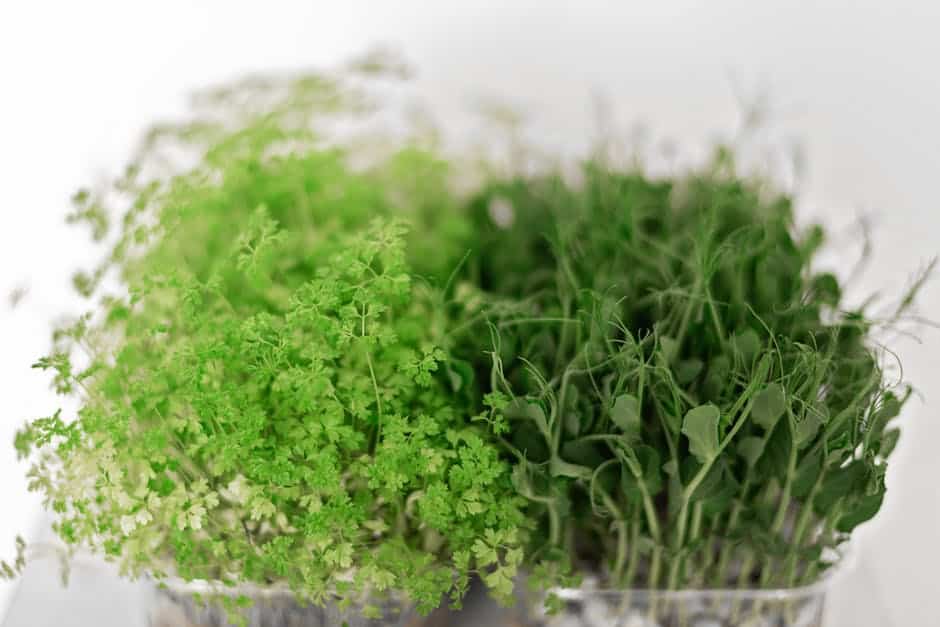How to Grow Chia Microgreens?
Chia microgreens are a nutritious and delicious addition to any dish. These tiny greens are packed with vitamins, minerals, and antioxidants, making them a healthy choice for sprucing up your meals. If you’re interested in growing chia microgreens at home, here’s a detailed guide to help you get started.
Choosing the Right Seeds
The first step to growing chia microgreens is to choose the right seeds. It’s important to use certified organic chia seeds for optimal quality. Look for seeds specifically labeled for microgreen cultivation, as they are bred to produce tender and flavorful shoots.
Source: Epic Gardening
Preparing the Growing Medium
Next, you’ll need to prepare a suitable growing medium for your chia microgreens. There are a few options you can choose from, such as seed-starting soil, coconut coir, or a potting mix formulated for microgreens. Make sure the medium can retain moisture without drowning the seeds.
Source: Practical Growing
Sowing the Seeds
Once you have your seeds and growing medium ready, it’s time to sow the chia seeds. Spread them evenly across a shallow seed-starting tray without covering them with soil. You can use approximately 4 tablespoons of chia seeds for a 10×20 tray. Mist the seeds with water to keep them moist.
Source: Practical Growing
Caring for the Microgreens
Proper care is essential for the healthy growth of your chia microgreens. Here are some key steps to follow:
Germination
During the germination stage, it’s important to keep the soil moist. Mist the tray daily with water using a spray bottle. You can also cover the tray with a lid to retain moisture and create a greenhouse-like environment for the seeds to sprout.
Source: Practical Growing
Light and Temperature
Chia microgreens require adequate light for healthy growth. You can place the tray near a south-facing window to provide indirect sunlight, or use artificial grow lights. It’s recommended to provide at least 6-8 hours of light daily for optimal growth. Maintain a temperature of 65-75°F (18-24°C) for the best results.
Source: Shuncy
Air Circulation
Good airflow is important to prevent disease and promote healthy growth. Consider using a small fan on the lowest setting to create gentle air circulation around the microgreens.
Source: QooPlants
Harvesting and Storage
Chia microgreens are typically ready to harvest in about 8-12 days, once they have developed their first set of true leaves. Cut the stalks as close to the growing medium as possible using clean scissors or a sharp knife. Rinse the harvested microgreens lightly with cold water before serving.
If you need to store the microgreens, make sure they are as dry as possible. Place them between two pieces of paper towel to absorb excess water and store them in a sealed plastic bag or container in the refrigerator.
Source: The Microgreenie
Conclusion
Growing chia microgreens is a rewarding and straightforward process. By following the steps mentioned above, you can enjoy a fresh supply of nutritious and flavorful greens right at home. Remember to choose high-quality chia seeds, provide proper care, and harvest the microgreens at the right time for the best results.
Related Websites:
FAQs:
Q: What are the health benefits of chia microgreens?
Chia microgreens are packed with nutrients like omega-3 fatty acids, fiber, protein, and antioxidants. Consuming chia microgreens can support heart health, improve digestion, boost energy levels, and promote a strong immune system.
Q: How cost-effective is it to grow chia microgreens at home?
Growing chia microgreens at home is highly cost-effective. Buying chia microgreens from stores can be expensive, but growing them yourself saves money in the long run. Chia seeds are affordable, and the minimal equipment and space needed for growing make it a budget-friendly option.
Q: What are the environmental advantages of growing chia microgreens at home?
Growing chia microgreens at home is environmentally friendly. You reduce the carbon footprint associated with transportation and packaging when you grow your own microgreens. Additionally, homegrown microgreens eliminate the use of pesticides and chemicals typically found in commercially grown produce.
Q: How do I properly care for chia microgreens during the growth phase?
To care for chia microgreens, ensure they receive adequate watering without overwatering them. Keep an eye out for any signs of mold and adjust the moisture levels accordingly. Provide the microgreens with sufficient light, maintain the ideal temperature, and avoid extreme fluctuations. With proper care, you can achieve healthy and vibrant chia microgreens.
Q: What are some ideas for incorporating chia microgreens into meals and snacks?
Chia microgreens can be used in a variety of ways. Add them to salads, wraps, sandwiches, or smoothies for a nutritious boost. They can also be sprinkled on top of soups, omelets, or avocado toast. Experiment with different recipes to explore the unique flavors and textures that chia microgreens bring to your meals.






